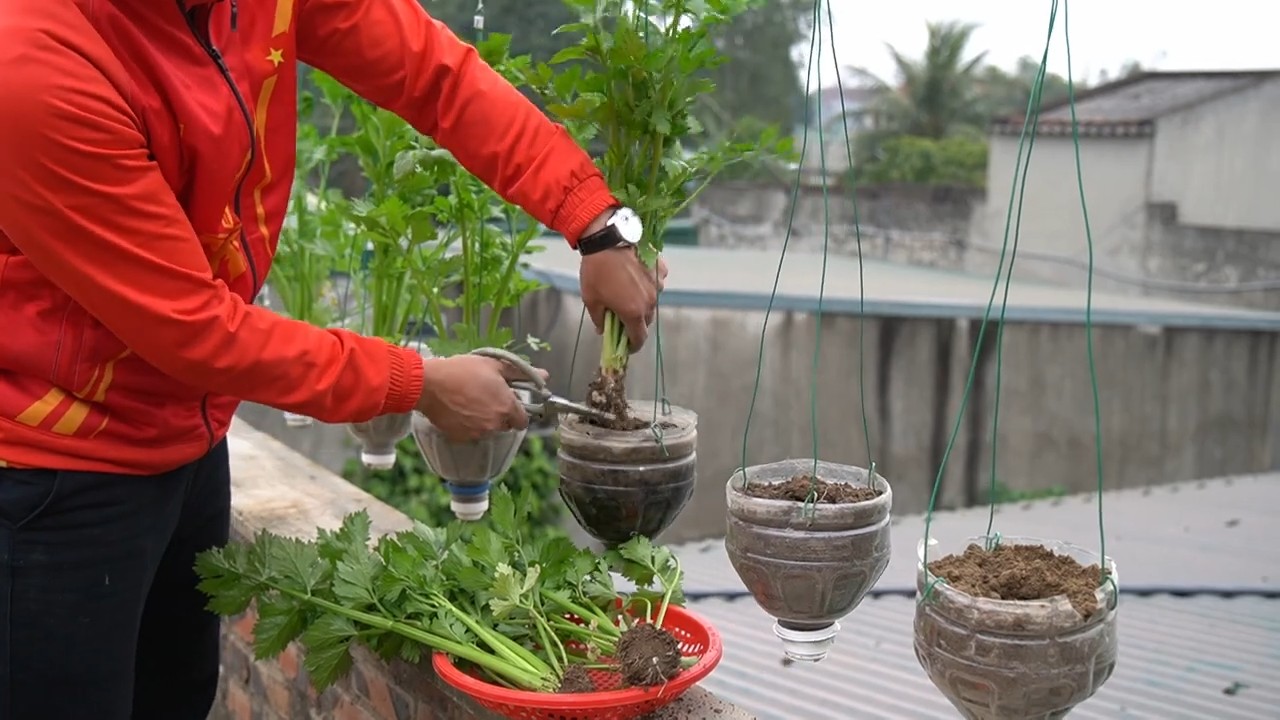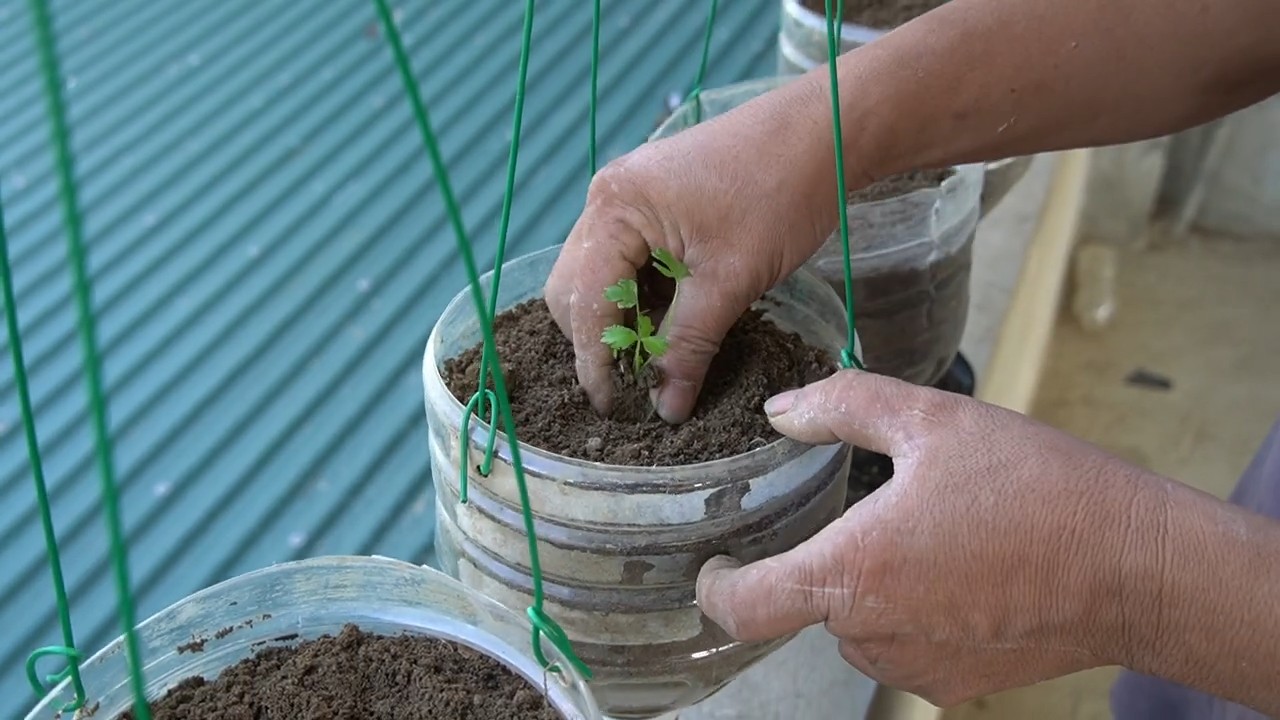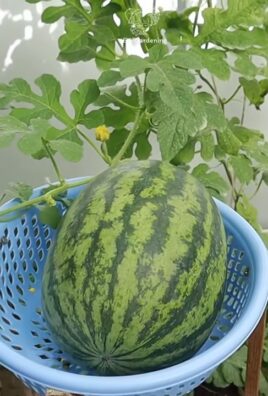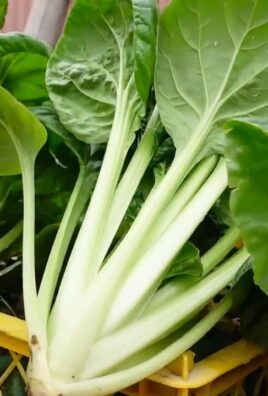Vertical celery gardening: sounds like something out of a futuristic farm, right? Well, it’s surprisingly simple and a fantastic way to maximize your garden space, especially if you’re dealing with a small balcony, patio, or even just a sunny windowsill. For centuries, gardeners have been finding creative ways to cultivate food in limited areas. From the hanging gardens of Babylon to the ingenious terrace farming techniques in ancient civilizations, the desire to grow our own food, regardless of space constraints, is deeply ingrained in our history.
But why celery, and why vertical? Celery, while delicious and nutritious, can be a bit of a space hog in a traditional garden. This is where the magic of vertical gardening comes in! I’ve found that many people struggle with growing celery because they simply don’t have enough room. Plus, a vertical setup can offer better air circulation, reducing the risk of fungal diseases that celery is prone to.
This DIY guide will walk you through the process of creating your own vertical celery gardening system, step-by-step. I’ll share my favorite tips and tricks for choosing the right materials, planting your celery, and keeping it thriving. Get ready to enjoy fresh, homegrown celery, no matter how small your space!

DIY Vertical Celery Garden: Grow Your Own Crunch!
Hey there, fellow gardening enthusiasts! Are you short on space but craving fresh, crunchy celery? Well, I’ve got the perfect solution for you: a DIY vertical celery garden! This project is not only space-saving but also adds a unique, green touch to your balcony, patio, or even a sunny corner indoors. I’ll walk you through every step, from gathering your materials to harvesting your homegrown celery. Let’s get started!
What You’ll Need: The Supply List
Before we dive in, let’s make sure we have everything we need. Here’s a comprehensive list:
* A sturdy container: This could be a large plastic storage bin (at least 18 inches deep), a repurposed wooden crate, or even a series of stacked planters. The key is to ensure it has drainage holes.
* PVC pipe: Choose a PVC pipe with a diameter of at least 4 inches. The length will depend on the height of your container. I recommend a pipe that extends a few inches above the container’s rim.
* Drill with various sized drill bits: You’ll need this to create planting holes in the PVC pipe.
* Potting soil: A high-quality potting mix is crucial for healthy celery growth. Look for a mix that retains moisture well but also drains effectively.
* Celery seedlings or celery base: You can either start with celery seedlings from your local nursery or regrow celery from the base of a store-bought stalk. I’ll explain both methods.
* Gravel or pebbles: For drainage at the bottom of the container.
* Landscape fabric or burlap: To line the container and prevent soil from washing out.
* Measuring tape or ruler: For accurate hole placement.
* Permanent marker: To mark the drilling spots.
* Gloves: To protect your hands.
* Watering can or hose: For watering your celery.
* Optional: Slow-release fertilizer: To provide your celery with extra nutrients.
Building Your Vertical Celery Garden: Step-by-Step
Okay, now for the fun part! Let’s build our vertical celery garden.
1. Prepare the Container:
* First, line the inside of your container with landscape fabric or burlap. This will help prevent soil from escaping through the drainage holes. Make sure the fabric covers the bottom and sides of the container.
* Next, add a layer of gravel or pebbles to the bottom of the container. This will improve drainage and prevent the soil from becoming waterlogged. A layer of about 2-3 inches should be sufficient.
2. Prepare the PVC Pipe:
* Measure and mark the PVC pipe for planting holes. I recommend spacing the holes about 6-8 inches apart, staggering them around the pipe. This will allow for even sunlight exposure and prevent overcrowding.
* Use a permanent marker to mark the center of each hole.
* Start with a small drill bit to create pilot holes. This will help guide the larger drill bit and prevent the PVC pipe from cracking.
* Gradually increase the size of the drill bit until the holes are about 2-3 inches in diameter. This is large enough to accommodate the celery seedlings or celery base.
* Smooth the edges of the holes with sandpaper or a file to prevent any sharp edges that could damage the celery plants.
3. Position the PVC Pipe:
* Place the PVC pipe vertically in the center of the container, standing it upright in the middle of the gravel layer.
* Make sure the pipe is stable and secure. You can use rocks or bricks to support it if needed.
4. Fill the Container with Soil:
* Slowly add potting soil around the PVC pipe, filling the container to just below the first row of holes.
* Gently pack the soil around the base of the pipe to provide support.
* Continue adding soil, layer by layer, until the container is almost full. Leave a few inches of space at the top for watering.
Planting Your Celery: Two Methods
Now, let’s get those celery plants in the ground (or, in this case, the PVC pipe!). You have two options: starting with seedlings or regrowing from a celery base.
Method 1: Planting Celery Seedlings
1. Prepare the Seedlings:
* Gently remove the celery seedlings from their containers.
* Loosen the roots slightly to encourage growth.
2. Plant the Seedlings:
* Carefully insert each seedling into a hole in the PVC pipe.
* Make sure the roots are covered with soil and the base of the plant is level with the edge of the hole.
* Gently press the soil around the seedling to secure it in place.
* Repeat this process for all the holes in the PVC pipe.
* Plant additional seedlings around the base of the PVC pipe in the container.
Method 2: Regrowing Celery from a Base
1. Prepare the Celery Base:
* Cut off the base of a celery stalk, leaving about 2 inches of the bottom intact.
* Place the celery base in a shallow dish of water, with the cut side facing up.
* Place the dish in a sunny location and change the water every day.
* After a few days, you should see new roots and small leaves sprouting from the top of the base.
2. Plant the Celery Base:
* Once the roots are about an inch long, you can plant the celery base in the vertical garden.
* Carefully insert the celery base into a hole in the PVC pipe.
* Make sure the roots are covered with soil and the top of the base is level with the edge of the hole.
* Gently press the soil around the base to secure it in place.
* Repeat this process for all the holes in the PVC pipe.
* Plant additional celery bases around the base of the PVC pipe in the container.
Caring for Your Vertical Celery Garden: Tips and Tricks
Now that your celery is planted, it’s time to provide it with the care it needs to thrive.
1. Watering:
* Celery needs consistent moisture to grow well. Water your vertical garden regularly, especially during hot, dry weather.
* Water the soil directly, avoiding wetting the leaves. This will help prevent fungal diseases.
* Check the soil moisture regularly by sticking your finger into the soil. If the top inch feels dry, it’s time to water.
* Water deeply, allowing the water to drain out of the bottom of the container.
2. Sunlight:
* Celery needs at least 6 hours of sunlight per day. Place your vertical garden in a sunny location.
* If you’re growing celery indoors, you may need to supplement with artificial light.
3. Fertilizing:
* Celery is a heavy feeder, so it needs regular fertilization.
* Use a balanced fertilizer, following the instructions on the package.
* You can also add slow-release fertilizer to the soil when you plant the celery.
4. Pest and Disease Control:
* Keep an eye out for pests and diseases. Common celery pests include aphids, slugs, and snails.
* Remove pests by hand or use an organic insecticide.
* Prevent fungal diseases by watering the soil directly and providing good air circulation.
5. Blanching (Optional):
* Blanching celery will make the stalks more tender and less bitter.
* About two weeks before harvest, wrap the stalks with newspaper or cardboard to block out the sunlight.
* Secure the wrapping with twine or tape.
Harvesting Your Celery: Enjoy the Fruits (or Vegetables!) of Your Labor
After about 80-100 days, your celery should be ready to harvest.
1. Harvesting:
* Harvest celery by cutting the stalks at the base of the plant with a sharp knife.
* You can harvest individual stalks as needed or harvest the entire plant at once.
2. Storing:
* Store celery in the refrigerator for up to two weeks.
* Wrap the celery in a damp paper towel and place it in a plastic bag.
Troubleshooting: Common Issues and Solutions
Even with the best care, you might encounter some issues. Here are a few common problems and how to fix them:
* Yellowing leaves: This could be a sign of overwatering, underwatering, or nutrient deficiency. Adjust your watering schedule and fertilize your celery regularly.
* Stunted growth: This could be due to poor soil, lack of sunlight, or pest infestation. Make sure your

Conclusion
So, there you have it! Vertical celery gardening isn’t just a quirky gardening trend; it’s a game-changer for anyone looking to maximize their space, enjoy fresher celery, and add a unique touch to their garden or balcony. We’ve explored the simple yet effective method of growing celery vertically, and hopefully, you’re now brimming with ideas and ready to embark on your own vertical celery adventure.
Why is this a must-try? Because it addresses several common gardening challenges. Limited space? Vertical gardening solves that. Tired of battling soil pests and diseases? Elevating your celery reduces their impact. Want a visually appealing and productive garden? Vertical celery towers are both beautiful and bountiful. Plus, the satisfaction of harvesting your own crisp, flavorful celery, grown with your own hands, is simply unmatched.
But don’t stop there! Feel free to experiment and personalize your vertical celery garden. Try different container materials – repurposed plastic bottles, stacked tires, or even hanging baskets can all work wonders. Consider companion planting – basil, marigolds, and onions are known to deter pests and enhance celery growth. And if you’re feeling adventurous, explore different celery varieties. While Pascal celery is a classic choice, you might discover a new favorite with a unique flavor profile.
Don’t be afraid to get creative with your watering and feeding schedule. Celery is a thirsty plant, so regular watering is crucial, especially during hot weather. Supplement with a balanced liquid fertilizer every few weeks to ensure optimal growth and nutrient uptake. You can even try using compost tea for a natural and nutrient-rich boost.
The beauty of vertical celery gardening lies in its adaptability. It’s a technique that can be tailored to suit your specific needs, resources, and preferences. Whether you’re a seasoned gardener or a complete beginner, this is a project that’s both accessible and rewarding.
We wholeheartedly encourage you to give vertical celery gardening a try. It’s a fun, sustainable, and ultimately delicious way to grow your own food. And most importantly, we want to hear about your experiences! Share your photos, tips, and challenges in the comments below. Let’s build a community of vertical celery enthusiasts and learn from each other’s successes and failures. Your insights could inspire others to take the plunge and discover the joys of growing celery vertically. So, grab your seeds, gather your materials, and get ready to elevate your gardening game! Happy growing!
Frequently Asked Questions (FAQ)
What are the best celery varieties for vertical gardening?
While most celery varieties can be grown vertically, some are better suited than others. Pascal celery is a popular choice due to its crisp stalks and robust growth. Other good options include Conquistador and Utah Tall. Consider choosing varieties that are relatively compact and disease-resistant. Experimenting with different varieties is also a great way to discover your personal preference. Remember to check the seed packet for specific growing recommendations for each variety.
How often should I water my vertical celery garden?
Celery is a water-loving plant, so consistent moisture is crucial, especially when grown vertically. Check the soil moisture daily, and water thoroughly whenever the top inch feels dry to the touch. During hot weather, you may need to water twice a day. Ensure that your vertical system has adequate drainage to prevent waterlogging, which can lead to root rot. Consider using a self-watering system or adding water-retaining crystals to the soil mix to help maintain consistent moisture levels.
What type of soil is best for vertical celery gardening?
Celery thrives in rich, well-draining soil that is high in organic matter. A good potting mix for vertical celery gardening should consist of equal parts compost, peat moss (or coco coir), and perlite or vermiculite. This combination provides excellent drainage, aeration, and nutrient retention. You can also amend your soil with slow-release fertilizer to provide a steady supply of nutrients throughout the growing season. Avoid using heavy clay soils, as they can become waterlogged and inhibit root growth.
How much sunlight does vertical celery need?
Celery prefers full sun (6-8 hours of direct sunlight per day) but can tolerate partial shade, especially in hotter climates. If you’re growing celery indoors or in a shaded area, consider supplementing with grow lights to ensure adequate light exposure. Insufficient sunlight can result in leggy growth and reduced yields. Monitor your plants closely and adjust their position as needed to maximize sunlight exposure.
How do I fertilize my vertical celery garden?
Celery is a heavy feeder, so regular fertilization is essential for optimal growth. Start by incorporating a slow-release fertilizer into the soil mix at planting time. Then, supplement with a liquid fertilizer every 2-3 weeks throughout the growing season. Choose a balanced fertilizer with an NPK ratio of around 10-10-10. You can also use organic fertilizers such as compost tea or fish emulsion. Avoid over-fertilizing, as this can lead to nutrient burn.
How do I protect my vertical celery from pests and diseases?
Vertical gardening naturally reduces the risk of soilborne pests and diseases. However, celery can still be susceptible to certain problems, such as aphids, celery leaf tiers, and fungal diseases. Regularly inspect your plants for signs of infestation or disease. Remove any affected leaves or plants immediately. You can also use organic pest control methods such as insecticidal soap or neem oil. Ensure good air circulation around your plants to prevent fungal diseases.
When is the best time to harvest my vertical celery?
Celery is typically ready to harvest 80-100 days after planting. You can harvest individual stalks as needed or harvest the entire plant at once. To harvest individual stalks, simply cut them off at the base of the plant. To harvest the entire plant, cut it off just below the soil line. Celery is best harvested when the stalks are crisp and firm. Avoid harvesting celery that is wilted or discolored.
Can I grow celery vertically indoors?
Yes, you can absolutely grow celery vertically indoors, provided you have adequate light and space. Choose a sunny location near a window or supplement with grow lights. Ensure that your vertical system has good drainage to prevent waterlogging. Monitor the temperature and humidity levels, as celery prefers cooler temperatures and moderate humidity. With proper care, you can enjoy fresh, homegrown celery year-round, even indoors.
What are some creative ideas for vertical celery gardening systems?
The possibilities are endless when it comes to creating vertical celery gardening systems. You can use repurposed plastic bottles, stacked tires, hanging baskets, pallet gardens, or even commercially available vertical planters. Get creative and use materials that are readily available and suit your aesthetic preferences. Consider factors such as drainage, stability, and ease of access when designing your system.
How do I prevent celery from bolting (going to seed)?
Bolting is a common problem with celery, especially in hot weather. To prevent bolting, choose bolt-resistant varieties, provide adequate shade during the hottest part of the day, and ensure consistent watering. Avoid stressing the plants by over- or under-watering. If your celery starts to bolt, harvest it immediately, as the stalks will become bitter.




Leave a Comment